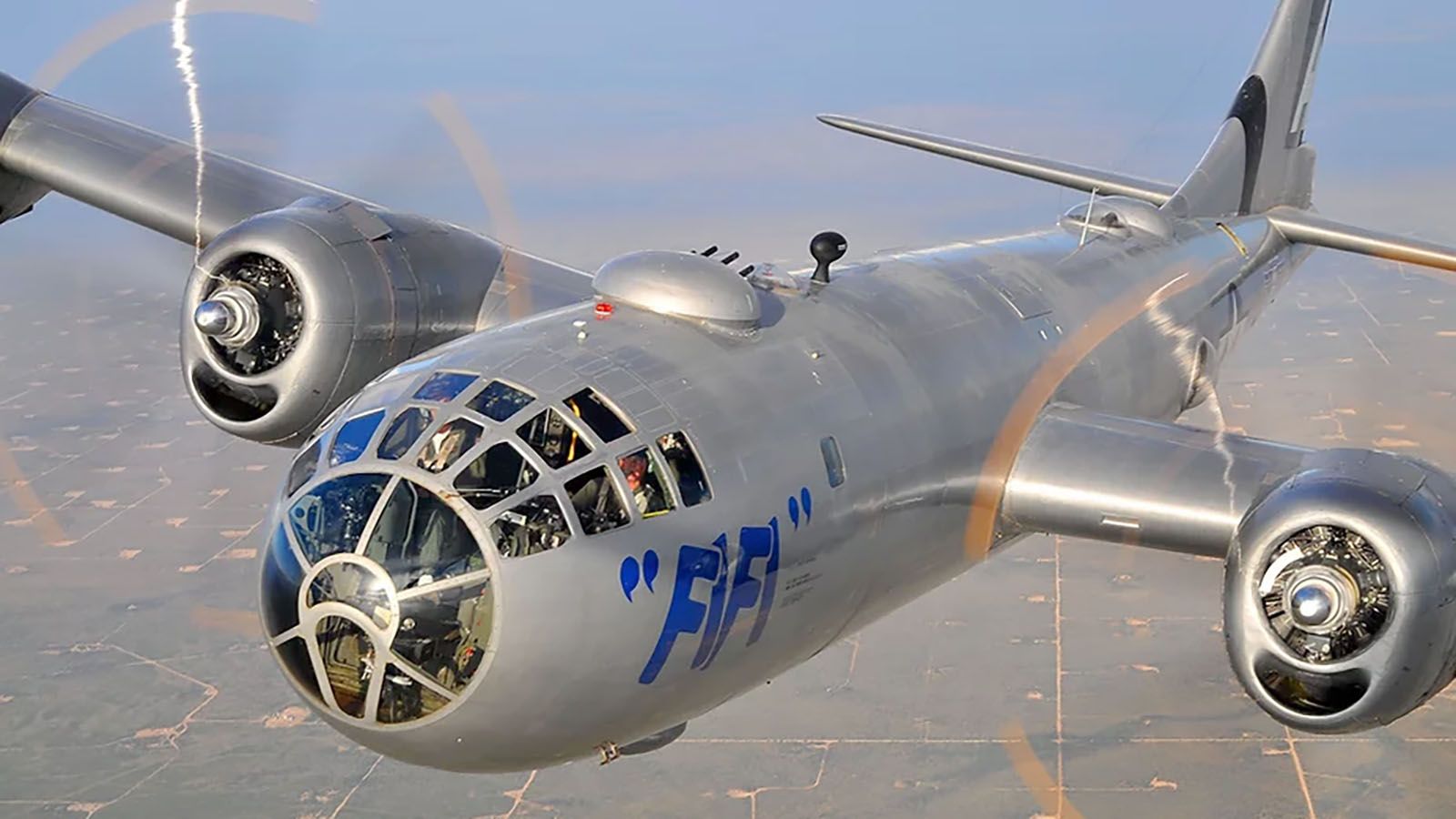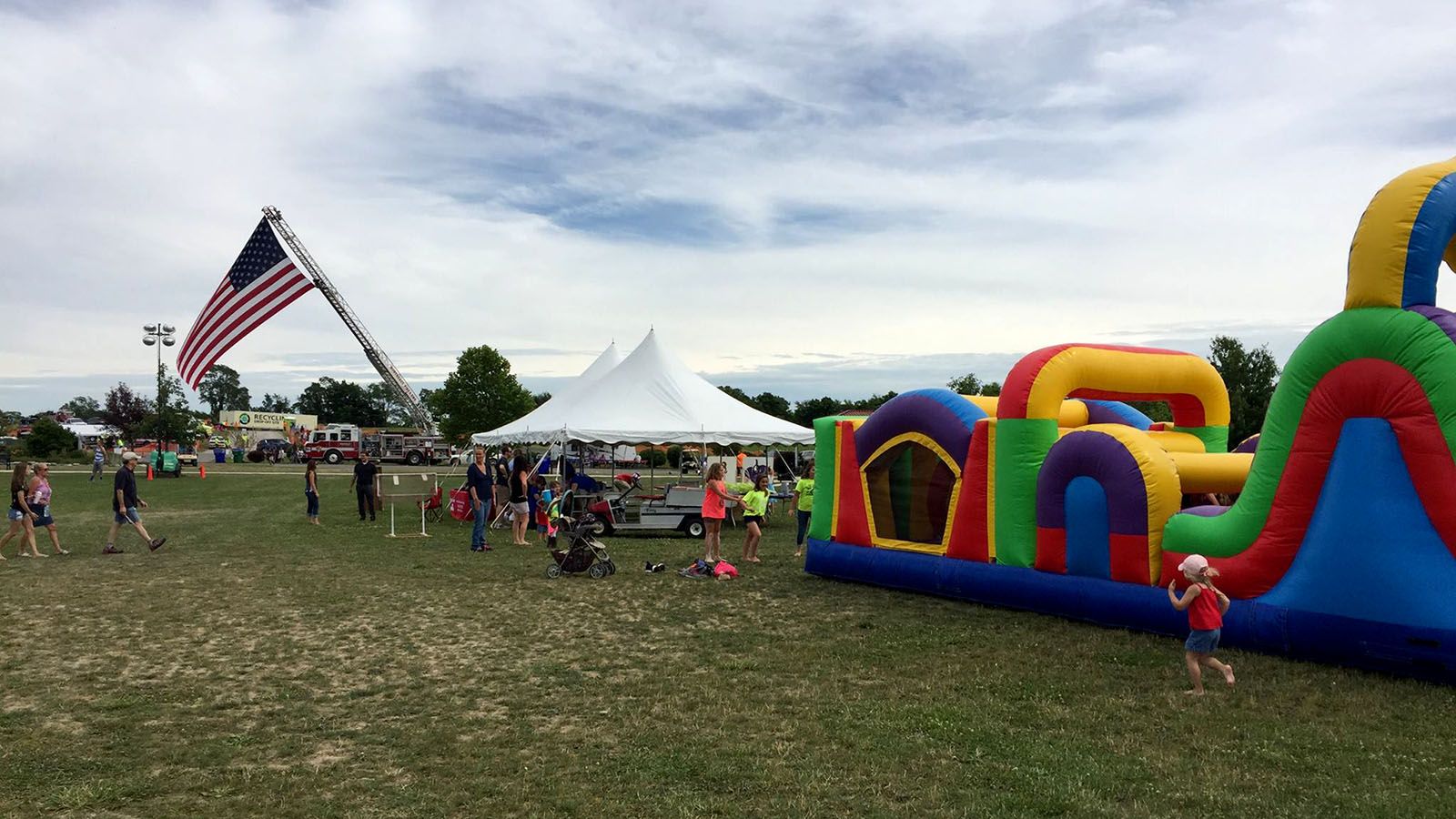Hunched over a walker, he moved closer to the warbird. He motioned, and his daughter helped him to his feet as he inched closer to the ladder. Proudly, he made his way up the ladder, got inside, and sat down. A smile formed.
For a moment, the frail veteran was once again an 18-year-old gunner on a B-29. This was the first, and maybe last, time aboard the plane since the war ended. For years he was quiet, keeping his tale to himself.
For anyone who will listen, he will tell his story. The story of the hum of the engine, and how his heart raced not knowing if he would return home to his base, let alone the family farm.
Anyone around him is transfixed on his courage and unmasked humility.
It doesn’t happen as much as it used to, said Jacques Robitaille, a spokesman for Commemorative Air Force. But it does happen, and it’s always a poignant moment. That’s why they fly to dozens of cities on their AirPower Tour every year.
It’s a rare chance to get a first-hand look at historic aircraft that won World War II. But its also a tribute to men and women of the Greatest Generation.
“We put these planes at fingertips’ reach for people who aren’t going to be able to see the planes,” Robitaille said. “We provide context to an incredible time in history.”
CAF’s AirPower Tour will be at Fort Wayne International Airport’s Aero Center to the main terminal June 30-July 4. The five-day visit puts legendary World War II aircraft up close and personal with cockpit tours and rides.
The tour includes legendary warbirds, such as the B-29 Superfortress, B-24 Liberator, and P-51 Mustang. Also sharing the tarmac are training planes, T-6 Texan and PT-13 Stearman.
One-of-a-Kind Experience
It’s one thing to see a World War II plane in photos, videos, or even in static display, but CAF offers a whole different experience.
“That’s what’s unique about this,” Robitaille said. “In museums, the planes are far away. They are behind a rope or a barrier of some kind. You can’t get up close, and you certainly can’t get it inside.”
The AirPower Tour takes it further, Robitaille said. “It’s an opportunity for folks that would normally (want) to see a B-29 or B-24 be able to touch them, be able to hear the roar when the engines start up, see the smoke belt out, hear the noise, and really get a sense of what it was like when these airplanes were firing up and get ready to go out on a mission.”
That means, to really understand the planes, one must go inside.
“They will be opened up, and folks will be able to take a walk through the airplane,” Robitaille said. “They walk through the bomb bay, go up into the cockpit area, and come back out.”
Star of the Show
The tour will make more than two dozen stops through November, and almost every one gets the same response.
The B-29 “FIFI” immediately makes a splash. The plane alone has enough historical significance to draw attention. The B-29 were tasked with dropping the two atomic bombs on Hiroshima and Nagasaki in August 1945.
Robitaille said the plane is an engineering marvel.
“The technical innovation that went into the production of this aircraft, and the creation of this aircraft, just astounds me,” he said.
FIFI has been part of the CAF’s stable since the 1970s, undergoing a four-year renovation, complete with hybrid engines. It’s considered the premier prop-driven aircraft of the era. It was also one of the largest of the war, a four-engine beast with pressurized cabins and computerized machine guns that could carry as much as 20,000 pounds of bombs at speeds of more than 200 miles per hour.
“You’ll recognize once you get on the B-29 just how big it is, especially compared to those other planes,” Robitaille said.
Those who have never been in the cockpit of a B-29 may feel like they’ve seen it before.
“A lot of folks say it looks just like the cockpit of the Millennium Falcon from Star Wars. It’s not by accident,” Robitaille said. “George Lucas actually took his inspiration for that from the cockpit of the B-29.”
Supporting Cast
The Liberator Diamond Lil was one of the first B-24s produced. Like the B-29, it was a decisive weapon in the Allies’ air arsenal.
It’s a fast, long-range, heavy bomber with precision bombing accuracy. More than 18,000 were produced, and they protected Allied transport shipping against submarines in the battle of the Atlantic, devastated the Axis industry, and were strategic in ground campaigns.
The T-6 Texan is a trainer for fighter pilots. In fact, the majority of Allied pilots in World War II earned their wings flying in one. According to CAF, 34 nations used them with hundreds of thousands of fliers going behind the yoke. It was dream to maintain, and was built to provide an outlet for aerial combat tactics.
The PT-13 Stearman is a biplane with significant wood and fabric. It looks similar to World War I fighter planes, and Robitaille said it offers a unique experience.
“It’s is an open cockpit aircraft, and so a ride on that is the wind in your face,” he said. “It’s just a fun ride.”
The P-51 Mustang fighter is also scheduled to appear. Robitaille describes it as a “premier fighter, and one of the most famous aircraft of the war.” It was used extensively as an escort for bombers in Europe. They could fly as high as 41,000 feet and had long range capability of as much as 1,300 miles. With six machine guns, they were effective at supporting ground troops. It was the aircraft used by the historic Tuskegee Airmen, topping 430 miles per hour.
Keeping the Planes in Air
Admission and paid rides help cover the costs of maintaining the planes, and bomber rides will be offered Saturday and Sunday morning.
“Its an all-volunteer organization,” Robitaille said. “Even the pilots have donated their time, that’s what makes it special. No one is here unless they want to be. The tour leaders, the pilots, (with the exception of mechanics), and everyone else, we do this as a labor of love.”
It’s not just fuel, it’s hanger costs, insurance, all the overhead, and everything else that goes into keeping the planes flying and sharing the stories of the men and women who participated in the war effort.
It’s a costly mission, according to Robitaille.
“One of the reasons we go on tour is because it’s our fundraising effort, how we make our money to keep these airplanes flying,” he said. “It costs well over a million dollars a year to maintain and operate these airplanes.”
He said they invest more than 100 hours of maintenance into every hour of flight. That is paid for by visitors to the CAF tour stops: buying tickets, rides, and donating.
For more information, including scheduling rides on the historic aircraft, go to www.airpowersquadron.org/ftwayne-in
 Submit Your Event
Submit Your Event




